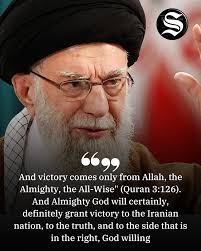
Introduction
Ali Khamenei, the Supreme Leader of Iran, holds a pivotal position not only within the Iranian political framework but also on the global stage. Given Iran’s significant role in Middle Eastern geopolitics, understanding Khamenei’s actions and decisions is crucial for grasping the broader regional dynamics. As Iran navigates international sanctions, domestic protests, and complex diplomatic relationships, Khamenei’s leadership style and decisions appear increasingly critical.
A Leadership Marked by Controversy
Khamenei has been in power since 1989 and continues to exert profound influence over Iranian domestic and foreign policies. In recent months, he has faced increasing challenges, notably from a series of protests sparked by economic distress and government repression, including those ignited by the death of Mahsa Amini in police custody in 2022. These protests, which saw citizens protesting against the regime’s authoritarian policies, have pushed Khamenei in a defensive position, leading him to reaffirm his commitments to uphold the Islamic Republic’s values at all costs.
Domestic and International Challenges
Domestically, Khamenei’s leadership has been challenged by waves of dissent calling for political reform and greater personal freedoms. The internal unrest has underscored the foundational struggle between the clerical establishment and the younger generation yearning for change. Khamenei’s refusal to engage with reformist demands has led to questions about the sustainability of his leadership amidst growing public discontent.
Internationally, Khamenei’s position remains complicated by ongoing tensions with the United States and its allies. The Iran nuclear deal, formally known as the Joint Comprehensive Plan of Action (JCPOA), has been a focal point of contention in recent years. Khamenei’s hardline stance against Western influence and insistence on nuclear capability asserts his commitment to the revolutionary ideology. With the talks on reviving the JCPOA stagnating, Khamenei’s strategy emphasizes a dual approach of resilience against sanctions and calls for regional partnerships.
Conclusion
The situation under Khamenei’s leadership reflects a key tension that is likely to shape Iran’s future: the dichotomy between reformist aspirations and authoritarian governance. As 2024 approaches, observers remain cautious yet vigilant regarding Khamenei’s next moves, particularly in terms of fostering internal stability while navigating the contentious international landscape. Understanding Khamenei’s strategies will be vital for analysts, policymakers, and anyone interested in the evolving dynamics of Iran and its role in global affairs.



